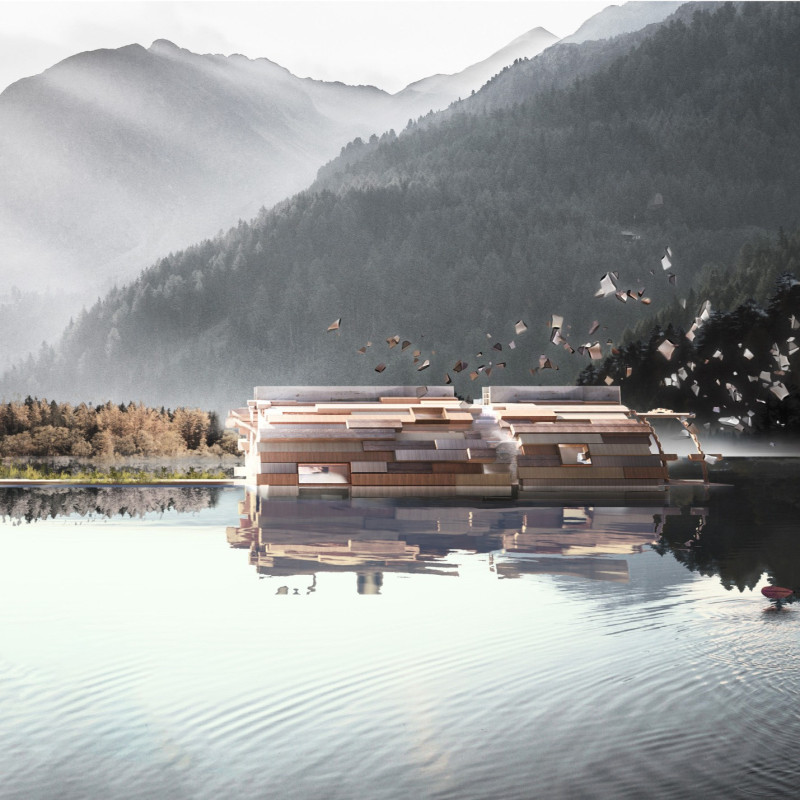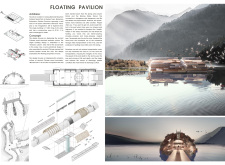5 key facts about this project
The pavilion is not merely a physical structure; it represents a dialogue between nature and architecture. The concept draws inspiration from the traditional practices of ancient Chinese wood merchants, encapsulating the idea of "Wooden Pai" or "emission culture." This provides a cultural context that informs the design and emphasizes the importance of preserving local craftsmanship while encouraging social interaction and communal gathering.
Understanding the function of the Floating Pavilion is crucial to appreciating its architectural significance. The space is intended as a community hub that accommodates cultural exhibitions, educational programs, and events. This multifunctional aspect fosters engagement and enhances the community's connection to its heritage and environment. By effectively communicating these themes, the pavilion becomes a vital resource for both locals and visitors.
Design elements that set the Floating Pavilion apart include its structural materials and innovative use of space. The main materials utilized are timber, glass, steel, and concrete. The timber serves as the primary construction material, reflecting traditional craftsmanship, while glass elements facilitate an interaction with the surrounding landscape through transparency and natural light. The use of steel offers structural integrity to the floating design, and concrete is strategically incorporated in the foundation for stability.
A distinctive element of the pavilion is its unique integration with water. Floating architecture poses specific design challenges, yet this project embraces the water body as an integral part of its identity. The structure's placement not only respects the natural landscape but also optimizes thermal performance and natural ventilation. This responsiveness to environmental conditions enhances user experience and supports ecological sustainability.
The pavilion’s design showcases a fluid transition between indoor and outdoor areas, promoting a connection to nature while enhancing the functional layout. The architectural plans of the project highlight the meticulous consideration of space utilization, allowing for flexible configurations that can adapt to various community needs.
Through its thoughtful design and execution, the Floating Pavilion serves as an example of how architecture can successfully merge cultural significance and environmental responsibility. To explore the details of this project further, including architectural plans, sections, and design ideas, readers are encouraged to delve deeper into the project presentation. Such exploration will yield valuable insights into its architectural achievement and functional scope.























